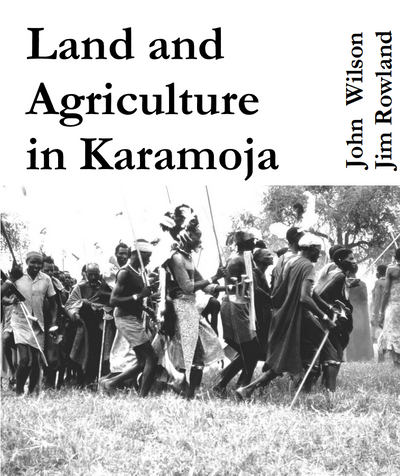
Karamoja is one of those areas of East Africa where little effort has gone into understanding the lifestyle and problems of the people. It is only quite recently that many ‘experts’ have come to realize that African farmers and herdsmen have systems which are very well adapted to the difficult situations in which they live. The people of Karamoja (usually called the Karimojong, though not all of them are, in fact, Karimojong) are no exception. They are the true ‘experts’ on living in Karamoja, and know more about the pastures, plants, soils and environment than do any administrators or advisers from outside.
Their knowledge is based on experience, the traditions and wisdom passed down from generation to generation. However, the past is not always a good guide to the future, or even to the present. In recent years, great changes have affected the Karimojong. Since 1920, the human population of Kotido and Moroto Districts has increased from 55,000 to about 400,000, and during that time the land available for them to graze their animals has decreased for political and security reasons. This has meant that the Karimojong now depend more on crop production for survival. Also, there is much less game left, and there are more people who need to eat wild animals and plants in times of famine. For these and other reasons, famines now occur more frequently, and are more disastrous, causing greater suffering.
Traditional Karimojong agriculture is not able to provide all the food needed, especially in years when drought or pests and diseases damage crops. Some changes are needed if terrible famines like that of 1979- 81 are to be avoided in future.
The aim of this book is to record some of the information that may be helpful in bringing about the changes needed. But first it tries to explain, especially to the newcomer to Karamoja, some of the background to the ecology, people and agriculture of the two districts. This may perhaps help those who wish to promote the development of Karamoja from repeating all the mistakes of the past.
John Wilson served for many years as District Agricultural Officer for the former Karamoja District (now Kotido and Moroto Districts) and spent many years living in Karamoja after retiring from government service. While working for the Department of Agriculture, he carried out the major surveys of the soils and vegetation of Karamoja, and these remain the most detailed studies of the ecology of the region. During the period 1981-6 he worked with Oxfam as the manager of the Kapedo Settlement Project.
Jim Rowland went to Karamoja in 1971 to work with the Church of Uganda and was given the task of finding ways in which farmers in Karamoja could obtain better and more reliable yields. He was firstly manager of the Karamoja Agricultural Project at Kacheri in Jie County, and later set up the Karamoja Seeds Scheme based in Kotido. He also served for several years as Diocesan Development Officer. He returned to the U.K. in 1986.
Publication Details
- Published: 1999